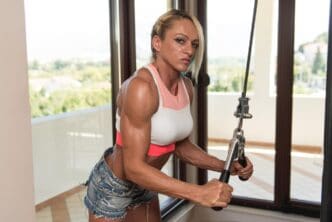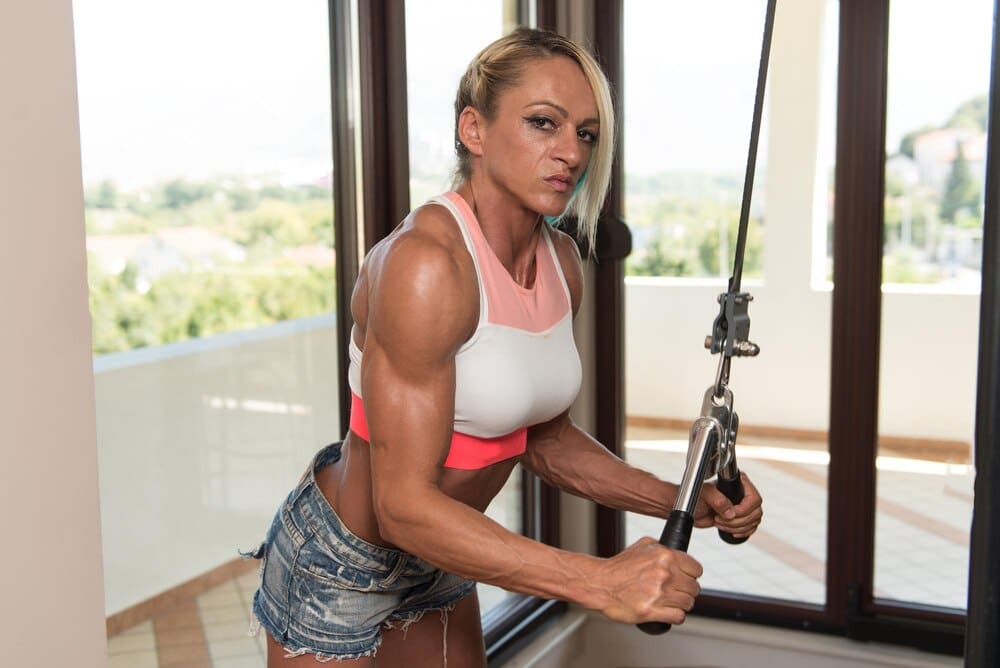In the sun-drenched, fitness-focused gyms of Miami and beyond, countless individuals dedicate time each week to building impressive arms, with the bicep curl being the star of the show. Yet, for many, significant growth remains elusive. The culprit is rarely a lack of effort but rather a misunderstanding of proper execution. The key to unlocking real bicep gains lies not in lifting the heaviest weight possible, but in mastering meticulous form, controlling every phase of the movement, and understanding the anatomy of the muscle you’re trying to build. By prioritizing technique over ego, anyone can transform their bicep workouts from an exercise in futility into a powerful stimulus for growth and strength.
Understanding the Anatomy of Your Arms
Before you can effectively train a muscle, you must first understand its structure and function. The biceps are more complex than many realize, and knowing the anatomy helps clarify why different exercises and hand positions are so crucial for balanced development.
The primary muscle most people think of is the biceps brachii. This is a two-headed muscle located on the front of your upper arm. Its main functions are to flex the elbow (bringing your hand toward your shoulder) and supinate the forearm (turning your palm from facing down to facing up).
The Two Heads of the Biceps Brachii
The biceps brachii is composed of a long head and a short head. The long head runs over the top of the shoulder joint, and training it effectively is key to developing the coveted bicep “peak.” Exercises that place your arms behind your body, like incline dumbbell curls, put a greater stretch on the long head.
The short head is located on the inner side of the arm and contributes significantly to the overall thickness and width of the bicep. Exercises that position your arms in front of your body, such as preacher curls, tend to emphasize the short head.
The Unsung Heroes of Arm Size
Two other muscles are critical for impressive arm development. The brachialis sits directly underneath the biceps brachii. Building this muscle can actually “push” your bicep up, making it appear larger and fuller. The brachialis is a pure elbow flexor and is best targeted with neutral-grip movements, like hammer curls.
Finally, the brachioradialis is a large forearm muscle that also crosses the elbow joint. A well-developed brachioradialis adds significant size to the lower part of the upper arm and forearm, creating a more powerful and balanced look. This muscle is also heavily involved in hammer curls and reverse-grip curls.
The Cardinal Sins of Bicep Training: Are You Guilty?
Walk into any commercial gym, and you will see these form mistakes on repeat. They are the primary reason why so many people’s arms remain the same size year after year, despite countless sets of curls. Recognizing and correcting these errors is the first step toward real progress.
Sin #1: Ego Lifting and Using Momentum
This is the most common and destructive mistake. Loading the bar or grabbing dumbbells that are simply too heavy forces you to use other muscle groups to initiate the movement. You’ll see people rocking their entire body, heaving their shoulders, and using their lower back to swing the weight up.
When you do this, you are no longer isolating the biceps. Instead, the tension is distributed across your shoulders, traps, and back. You might be moving a heavy weight, but you are providing a minimal growth signal to the target muscle. It’s far more effective to use a lighter weight that you can control with perfect form.
Sin #2: Rushing the Eccentric (The Negative)
Most lifters focus exclusively on the concentric phase of the lift—the part where you are actively curling the weight up. Once they reach the top, they let the weight drop back down with little to no control. This is a massive missed opportunity for muscle growth.
The eccentric phase, or the “negative,” is when the muscle is lengthening under tension. This portion of the lift is scientifically proven to cause significant muscle micro-trauma, which is a key catalyst for hypertrophy (muscle growth). A controlled, slow negative (aim for 3-4 seconds) can double the effectiveness of every single rep.
Sin #3: Incomplete Range of Motion
Another common error is performing “half-reps.” Lifters often fail to fully extend their arms at the bottom of the movement, keeping constant tension but missing out on the benefits of a full stretch. This can lead to shortened muscle bellies and limited mobility over time.
Conversely, many don’t bring the weight all the way to the top to achieve a full, peak contraction. To maximize bicep activation, you must work the muscle through its entire range of motion—from a full extension at the bottom to a powerful squeeze at the top.
Sin #4: Letting the Elbows Drift Forward
To properly isolate the biceps, your elbows should act as a fixed hinge. They should remain pinned to your sides (or slightly in front of your torso) throughout the entire movement. A very common mistake is allowing the elbows to drift forward as you curl the weight up.
When your elbows move forward, your anterior (front) deltoids get involved to help lift the weight. This, once again, takes the tension off the biceps and places it on the shoulders, undermining the purpose of the exercise.
The Pillars of the Perfect Bicep Curl
Now that we’ve identified the common mistakes, let’s build the perfect rep from the ground up. This framework applies to nearly every variation of the bicep curl and will ensure you’re getting the most out of every set.
Step 1: The Setup
Begin with a stable base. Plant your feet about shoulder-width apart. Engage your core by bracing your abdominal muscles as if you’re about to take a punch. Pull your shoulder blades back and down. This posture creates stability and prevents you from using your back and shoulders to cheat.
Step 2: The Concentric (The Lift)
Initiate the curl by focusing solely on contracting your biceps. As you lift the weight, think about bringing your hands toward your shoulders, not just lifting the weight up. If using dumbbells, actively supinate your wrist, turning your pinky finger up toward the ceiling. This ensures maximum bicep activation. Keep your elbows locked in place.
Step 3: The Peak Contraction
At the very top of the movement, do not rush to lower the weight. Pause for one full second and squeeze your biceps as hard as you possibly can. This moment of peak isometric contraction creates an intense stimulus for growth that is often missed when reps are performed too quickly.
Step 4: The Eccentric (The Lowering)
This is where the magic happens. Fight gravity on the way down. Lower the weight slowly and with absolute control, taking at least three to four seconds to return to the starting position. Maintain tension on the bicep through the entire negative phase until your arm is fully extended.
Essential Exercises for Complete Bicep Development
A well-rounded routine should include a variety of exercises that target the biceps and surrounding muscles from different angles and with different resistance profiles.
The Standing Barbell Curl
Often called the king of bicep exercises, the barbell curl is a fundamental mass builder. It allows you to use a significant amount of weight to overload the biceps. Use a shoulder-width grip and focus on the principles of perfect form outlined above. Avoid cheating by keeping your torso completely still.
The Incline Dumbbell Curl
This is arguably the best exercise for targeting the long head of the bicep. By setting an adjustable bench to a 45-60 degree incline and letting your arms hang straight down, you place the biceps in a stretched position. This pre-stretch allows for a powerful contraction and is excellent for building the bicep peak.
The Preacher Curl
The preacher curl is a superior isolation exercise because the pad locks your upper arm in place, making it nearly impossible to cheat. This forces the bicep, particularly the short head, to do all the work. Focus on a full range of motion, especially getting a good stretch at the bottom.
The Hammer Curl
Using a neutral (palms facing each other) grip, the hammer curl is your go-to movement for building the brachialis and brachioradialis. Developing these muscles adds significant thickness and width to your arms. These can be done standing with dumbbells or with a rope attachment on a cable machine.
Conclusion: Train Smarter, Not Heavier
Building sculpted, powerful biceps is less about the weight on the bar and more about the quality of every single repetition. In the enthusiastic fitness culture of Miami and across the world, the path to real results is paved with discipline, not ego. By focusing on flawless form, controlling the eccentric phase, and choosing the right exercises to ensure balanced development, you can finally provide your muscles with the stimulus they need to grow. Leave the swinging and heaving to others; your commitment to perfect technique will be the true secret to unlocking your arms’ full potential.







